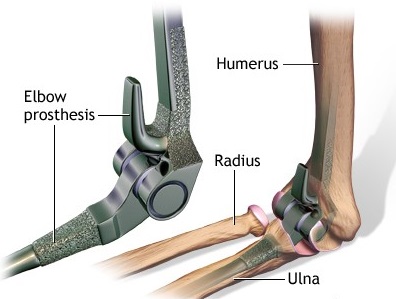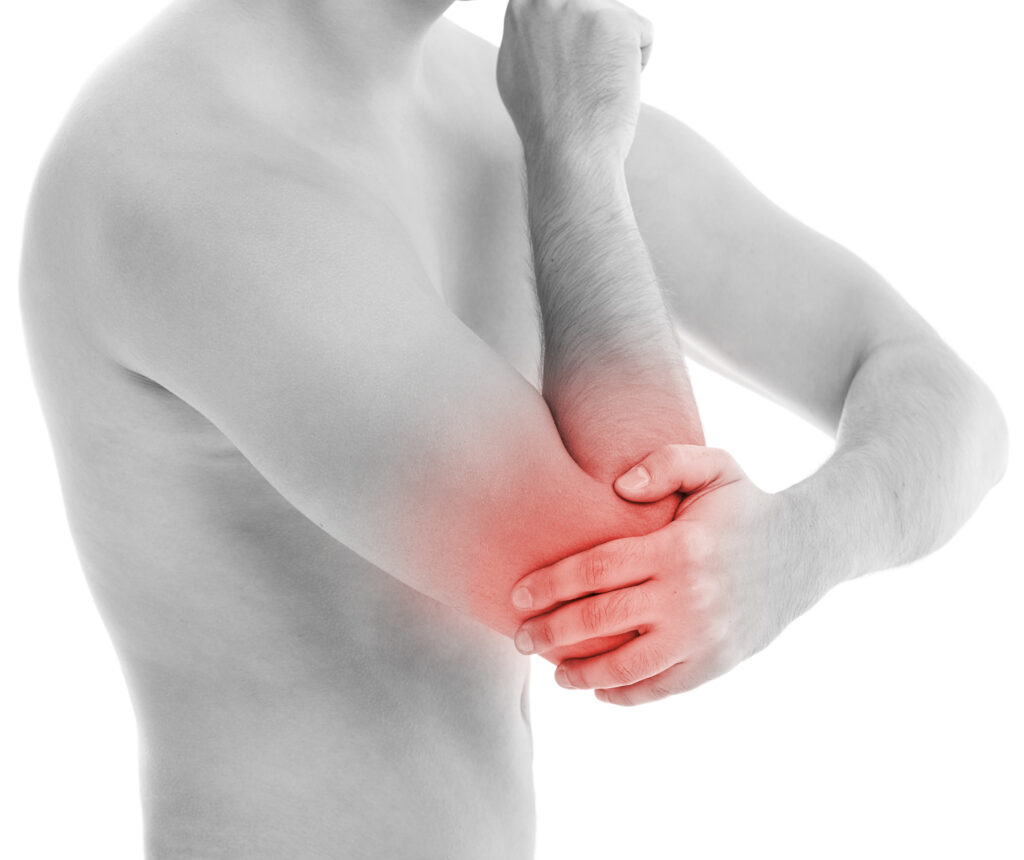Elbow Replacement Surgery
Elbow Replacement Surgery in Kolkata
During elbow replacement surgery, the damaged bone and cartilage are removed, and the humerus and ulna bones are replaced with metal implants. The artificial joint is then connected with a plastic spacer that allows the joint to move smoothly. After surgery, physical therapy and rehabilitation are necessary to help regain strength and function in the elbow.
Elbow replacement can help relieve pain and improve mobility in individuals with severe elbow joint damage. However, it is important to note that like any surgical procedure, elbow replacement does carry some risks, including infection, nerve damage, and joint loosening or dislocation over time. It is important to discuss the potential benefits and risks of elbow replacement surgery with your healthcare provider.
Elbow Replacement - Discharge
You had an operation to replace your elbow joint with an artificial one. During the surgery, the surgeon made a cut in your upper or lower arm, removed damaged tissue and bone parts, and put in the new joint. After closing the skin with stitches, you will now be going home. It’s important to follow the surgeon’s instructions on how to care for your new elbow. Refer to the information below as a reminder.

When You're in the Hospital
During your hospital stay, you were given medication to manage pain and were taught how to control swelling around your new elbow joint. Your surgeon or physical therapist may have also shown you exercises to perform at home.
What to Expect at Home
After surgery, you may experience warmth and tenderness around your elbow for 2-4 weeks. However, the swelling should decrease during this time.
For the first week after surgery, you may need to wear a soft splint to keep your elbow in place. Once the incision has healed, you may need to switch to a harder splint or brace with a hinge.
It’s a good idea to arrange for someone to assist you with daily tasks like shopping, bathing, meal preparation, and housework for up to 6 weeks. You may also want to make changes around your home to make it easier to care for yourself.
You will need to wait 6-8 weeks before driving, and your surgeon or physical therapist will let you know when it’s safe to do so. You may be able to begin using your elbow as soon as 12 weeks after surgery, but it may take up to a year to fully recover.

Activity
- Your post-surgery activity level will depend on the condition of your new elbow. Consult with your surgeon about the limits you may have.
- Physical therapy will be necessary to help you regain strength and use of your arm.
- You may need to wait a few weeks before beginning physical therapy if you have a splint.
- You can reduce soreness after physical therapy by applying ice to the joint for 15 minutes. Be sure to wrap the ice in a cloth and avoid putting it directly on the skin.
- Consult with your doctor to see if there is a weight limit for your new elbow replacement.
- After one week, you may be able to use your splint only while sleeping. Avoid carrying or pulling items even when your splint is off.
- By six weeks, you can gradually increase daily activities to help make your elbow and arm stronger. Ask your surgeon or physical therapist how much weight you can lift and if you need to do range-of-motion exercises for your shoulder and spine.
- By 12 weeks, you should be able to lift more weight. However, your new elbow will likely still have some limitations.
- Before starting any activity or moving your arm for any reason, make sure you know the proper way to use your elbow. Ask your surgeon or physical therapist if you can perform any activities that involve lifting objects heavier than 5 to 15 pounds, playing golf or tennis, throwing objects, performing jamming or pounding activities, engaging in impact sports, doing physical activities that require quick stop and start motions or twisting with your elbow, or pushing or pulling heavy objects.
Wound Care
- Stitches on your wound will be removed around 1 week after surgery.
- Keep the dressing (bandage) clean and dry. You can change it daily if you like.
- Avoid showering until your follow-up appointment with the surgeon. Let water run over the incision, but don’t let it beat down on it, and don’t scrub.
- Don’t soak the wound in a bathtub, hot tub, or swimming pool for at least the first 3 weeks.

Pain
You may experience pain after elbow replacement surgery, but it should improve with time. Your surgeon will prescribe pain medication, so make sure to fill it before you leave the hospital. Take the medication as soon as you start feeling pain, and don’t wait too long. Ask your doctor if ibuprofen or other anti-inflammatory drugs are safe to take with your pain medication. Narcotic pain medication can cause constipation, so drink plenty of fluids and eat high-fiber foods to avoid this. Do not drink alcohol or drive while taking these medications, as they can cause drowsiness.
When to Call the Doctor
If you experience any of the following, please contact your surgeon or nurse immediately:
- Blood is seeping through your dressing and the bleeding does not stop when you apply pressure on the area.
- Pain is not relieved even after taking pain medication.
- Swelling or pain in your arm.
- Numbness or tingling in your fingers or hand.
- Your hand or fingers look darker than normal or feel cool to the touch.
- Your incision shows redness, pain, swelling, or yellowish discharge.
- You have a fever above 101°F (38.3°C).
- Your new elbow joint feels loose or unstable.
